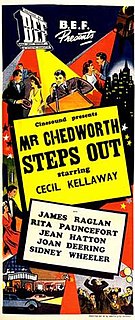Plot
This article's plot summary may be too long or excessively detailed.(May 2021) |
After an argument, Ellinor Devine reveals to her husband, Sir Richard, that he is not actually the father of their son, also named Richard, but that he was fathered by her cousin, Lord Bellasis. Sir Richard throws his son out and storms off in a rage. Shortly afterwards, Richard Junior finds his biological father dead in the forest. Only the viewer and an unidentified witness know that Lord Bellasis has actually been killed by his own son, known as John Rex. However, it is Richard Devine who is found next to the body and arrested. Thinking that his father killed Bellasis, Richard wants to protect his mother's reputation and gives his name as Rufus Dawes.
The convict ship that brings Dawes to Tasmania also carries the new governor Vickers and his wife and his daughter Sylvia. The commander of the ship is a brutal man by the name of Maurice Frere. With the Vickers is a young girl, Sarah Purfoy, as a nurse to the child. However, she really is the fiancée of John Rex, convicted for forgery, and tries to help the convicts take the ship. The rebellion is led by a murderer named Gabbett. They fail when Dawes overhears their plans and manages to warn an officer while being brought to a quarantine room for the sick. Gabbett decides to claim that Dawes was the actual ringleader.
A few years later, Frere comes to visit Vickers and shows interest in Sylvia, who has grown to be a beautiful young woman. Gabbett has come back after an escape and hints that he cannibalized his comrades to survive. Dawes, who is kept in solitary confinement on an island before the coast, attempts to drown himself. Frere has brought Vickers the order to give up the settlement and move to Port Arthur. Vickers embarks the convicts and sails with them. A smaller boat is supposed to carry Frere, Mrs Vickers and Sylvia, but is taken by John Rex, who maroons the three on the abandoned shore. Dawes finds them there a few days later and manages to inspire in them a new will to live. Sylvia especially takes to him very much and convinces him to make a boat, but Mrs Vickers dies before they can leave and makes Dawes promise to look after her daughter. The three survivors are found later by Vickers who has started to search for them. Frere takes the credit for saving Sylvia, who is herself unable to remember a thing after waking. Dawes is put back into prison.
Later again, it is shortly before the wedding of Sylvia and Frere. John Rex has been captured and Sarah Purfoy begs Frere to save his life by saying that he left them food and weapons. She threatens to reveal his past with some of the women in the settlement to Sylvia and Frere complies. Dawes, who also testifies, is shocked to find that Sylvia cannot remember him. He escapes on the night of the wedding to speak to Sylvia but is apprehended. The next day, a young convict named Cranky Brown is sentenced to a flogging for escape despite the protest of the reverend North and Dawes is ordered to carry out the punishment. He refuses to do so after Brown faints and is flogged himself. Upon finding that Brown is dead, Dawes curses Frere.
John Rex has planned another escape with the help of Gabbett. Dawes refuses to leave with them but asks Rex to post a letter for him. John Rex manages to escape with Sarah's help, while Gabbett and five other man get lost in the wilderness. Gabbett again starts killing and eating his comrades to survive. When he arrives at the shore, he is found by a group of sailors, who kill him. Rex reads Dawes letter in Sydney and understands his striking resemblance to Dawes, since they have the same father. He returns to England, where Ellinor Devine first accepts him as her son, but begins to become suspicious when he starts spending the family fortune. She confronts him with the fact that Richard was illegitimate, and Rex confesses to what happened.
Some years later again, Dawes is on Norfolk Island. Frere is on his way there to restore order. He quickly finds out that Dawes is the core of a rebellious "ring" whose members avenge every punishment through violence. The heavy punishments to which he sentences Dawes break him after some days. Reverend North becomes a close friend of Sylvia and when he visits Dawes in the hospital, the latter begs him to talk to Sylvia. Frere quickly learns about their friendship and after North infuriates him, he revenges it by punishing Dawes. One evening, he finds North and Sylvia in an embrace and suspects his wife to cheat on him. After he strikes her, Sylvia takes the next boat to the mainland; to her father. North goes to visit Dawes and confesses to him that he witnessed the murder of Lord Bellasis but did not tell anyone because Lord Bellasis held banknotes that North had forged. He gives Dawes his coat and tells him to go and see Sylvia. A storm breaks loose. The ship is about to sink as North frees the Norfolk Island convicts, who go after Frere. Sylvia recognises Dawes shortly before the ship sinks; at the same time, the convicts kill Frere. The next morning finds Dawes and Sylvia on a plank in calm waters.








